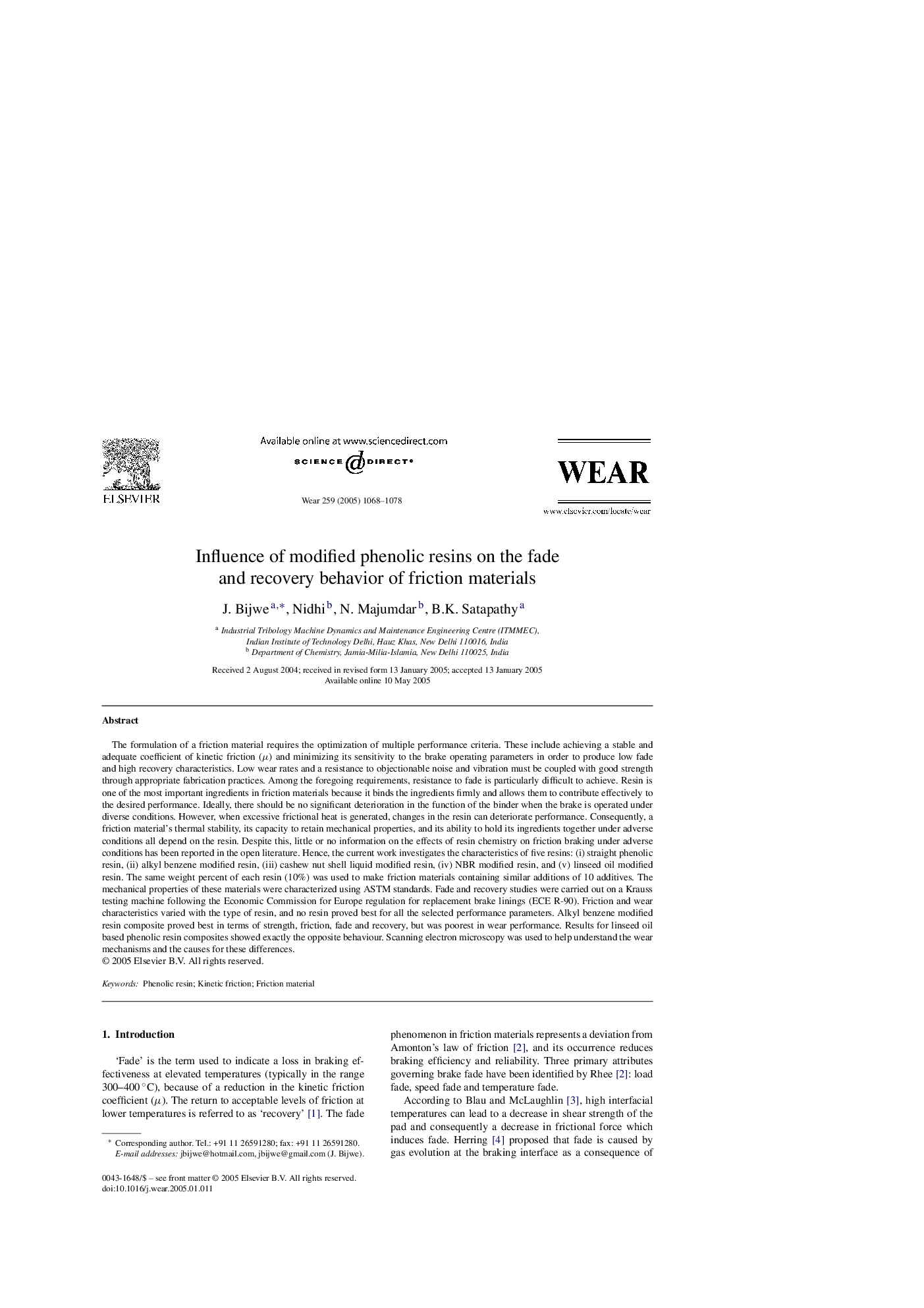| کد مقاله | کد نشریه | سال انتشار | مقاله انگلیسی | نسخه تمام متن |
|---|---|---|---|---|
| 9679327 | 1455080 | 2005 | 11 صفحه PDF | دانلود رایگان |
عنوان انگلیسی مقاله ISI
Influence of modified phenolic resins on the fade and recovery behavior of friction materials
دانلود مقاله + سفارش ترجمه
دانلود مقاله ISI انگلیسی
رایگان برای ایرانیان
کلمات کلیدی
موضوعات مرتبط
مهندسی و علوم پایه
مهندسی شیمی
شیمی کلوئیدی و سطحی
پیش نمایش صفحه اول مقاله

چکیده انگلیسی
The formulation of a friction material requires the optimization of multiple performance criteria. These include achieving a stable and adequate coefficient of kinetic friction (μ) and minimizing its sensitivity to the brake operating parameters in order to produce low fade and high recovery characteristics. Low wear rates and a resistance to objectionable noise and vibration must be coupled with good strength through appropriate fabrication practices. Among the foregoing requirements, resistance to fade is particularly difficult to achieve. Resin is one of the most important ingredients in friction materials because it binds the ingredients firmly and allows them to contribute effectively to the desired performance. Ideally, there should be no significant deterioration in the function of the binder when the brake is operated under diverse conditions. However, when excessive frictional heat is generated, changes in the resin can deteriorate performance. Consequently, a friction material's thermal stability, its capacity to retain mechanical properties, and its ability to hold its ingredients together under adverse conditions all depend on the resin. Despite this, little or no information on the effects of resin chemistry on friction braking under adverse conditions has been reported in the open literature. Hence, the current work investigates the characteristics of five resins: (i) straight phenolic resin, (ii) alkyl benzene modified resin, (iii) cashew nut shell liquid modified resin, (iv) NBR modified resin, and (v) linseed oil modified resin. The same weight percent of each resin (10%) was used to make friction materials containing similar additions of 10 additives. The mechanical properties of these materials were characterized using ASTM standards. Fade and recovery studies were carried out on a Krauss testing machine following the Economic Commission for Europe regulation for replacement brake linings (ECE R-90). Friction and wear characteristics varied with the type of resin, and no resin proved best for all the selected performance parameters. Alkyl benzene modified resin composite proved best in terms of strength, friction, fade and recovery, but was poorest in wear performance. Results for linseed oil based phenolic resin composites showed exactly the opposite behaviour. Scanning electron microscopy was used to help understand the wear mechanisms and the causes for these differences.
ناشر
Database: Elsevier - ScienceDirect (ساینس دایرکت)
Journal: Wear - Volume 259, Issues 7â12, JulyâAugust 2005, Pages 1068-1078
Journal: Wear - Volume 259, Issues 7â12, JulyâAugust 2005, Pages 1068-1078
نویسندگان
J. Bijwe, Nidhi Nidhi, N. Majumdar, B.K. Satapathy,